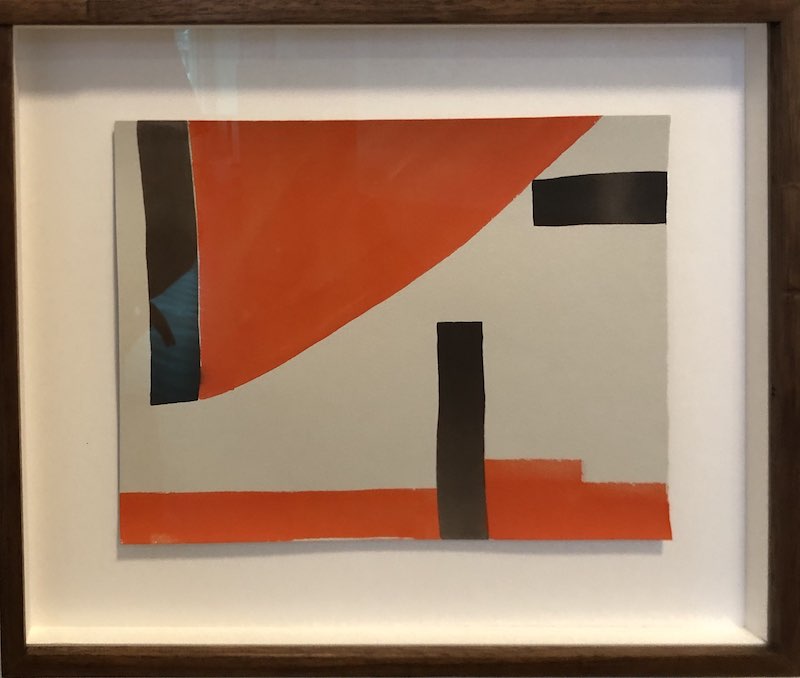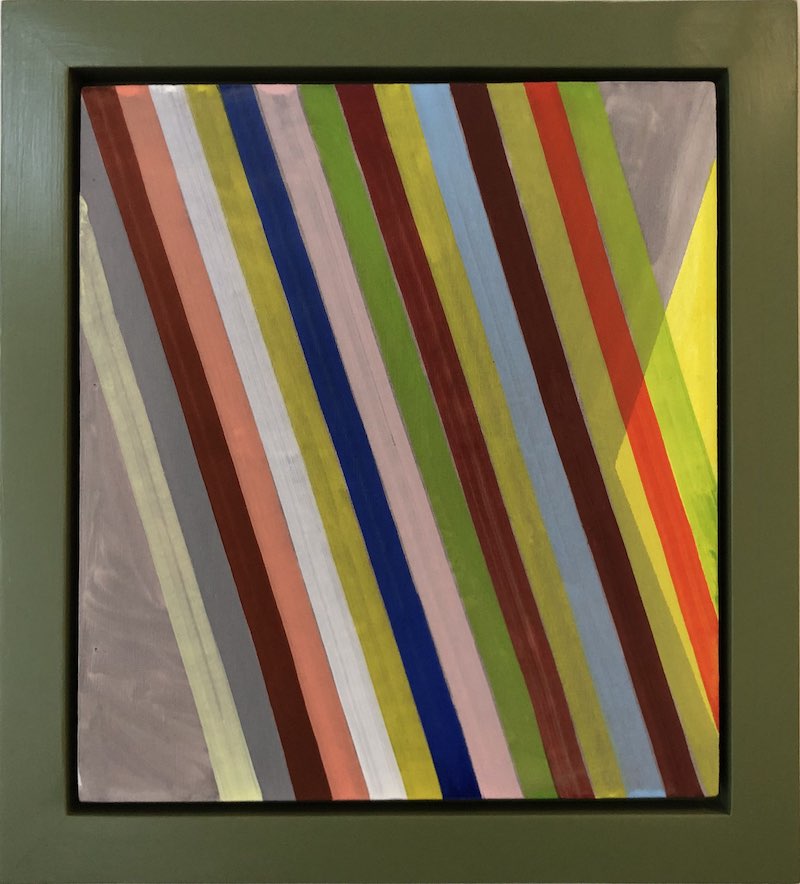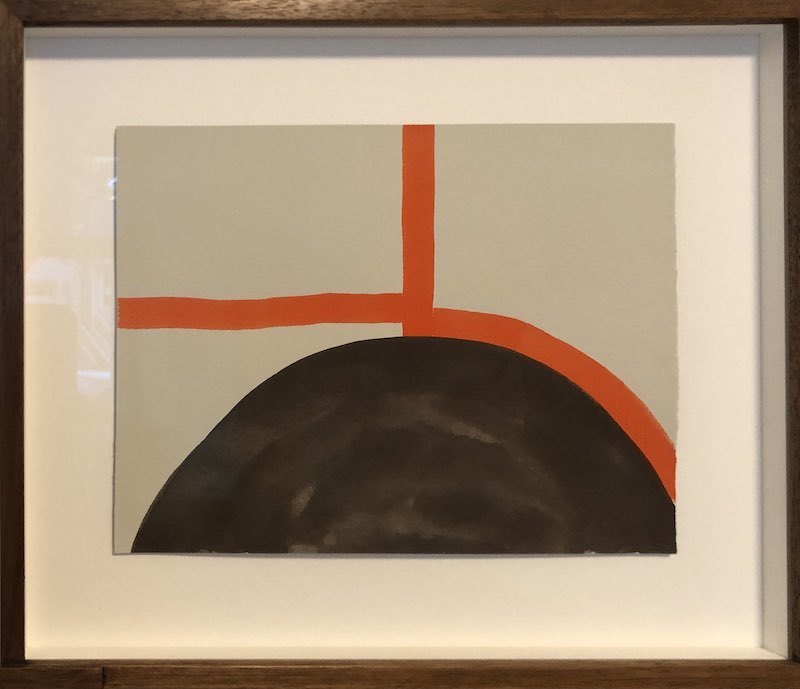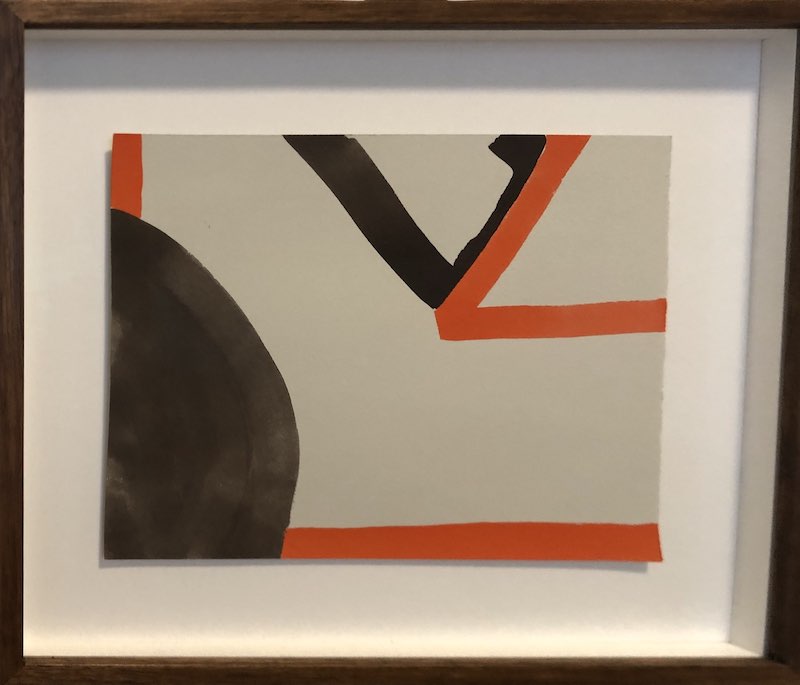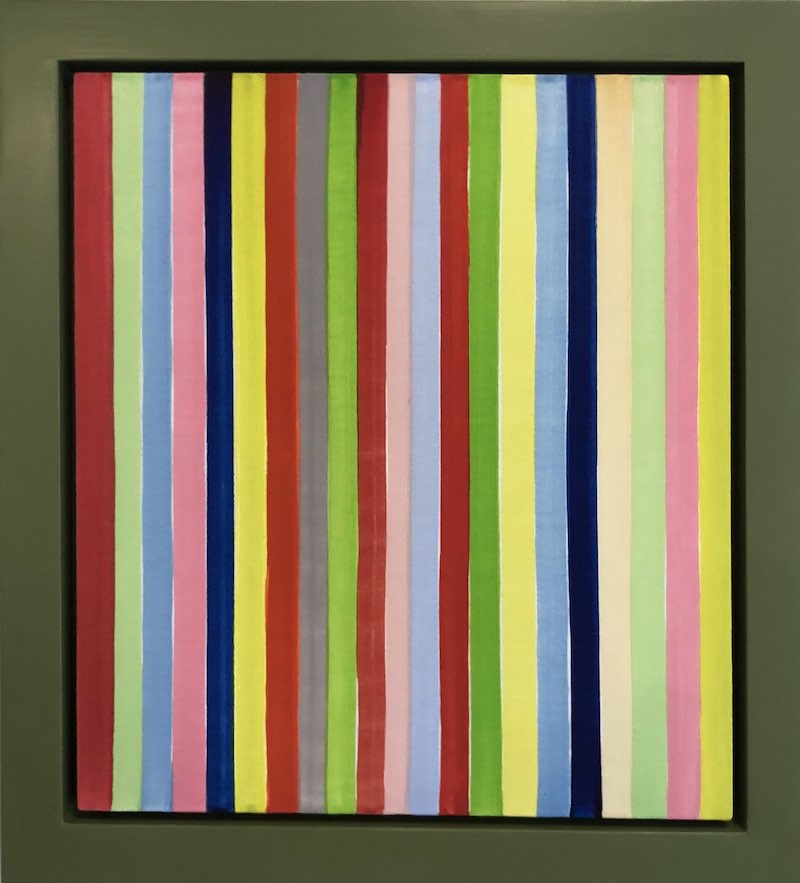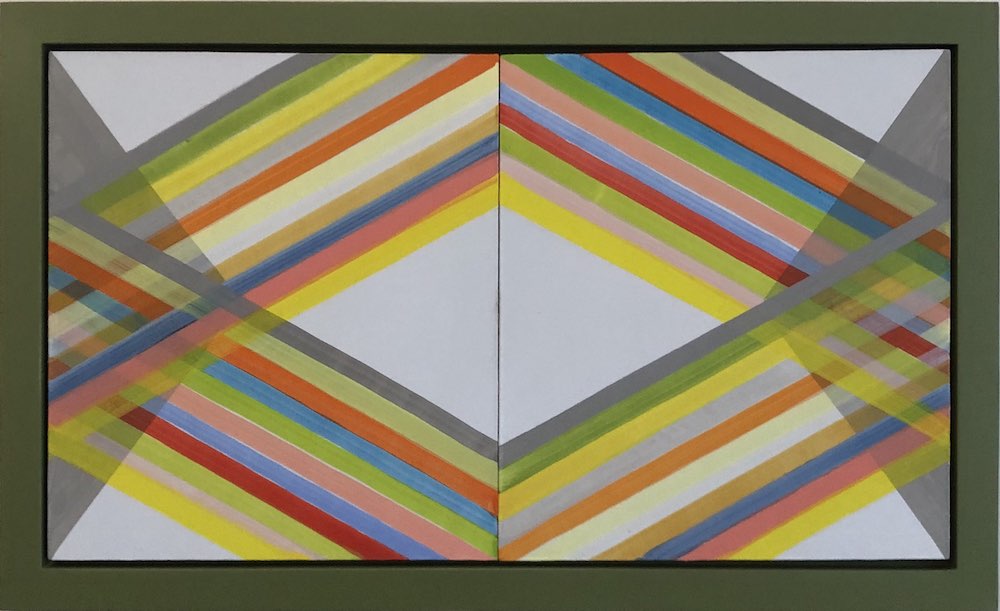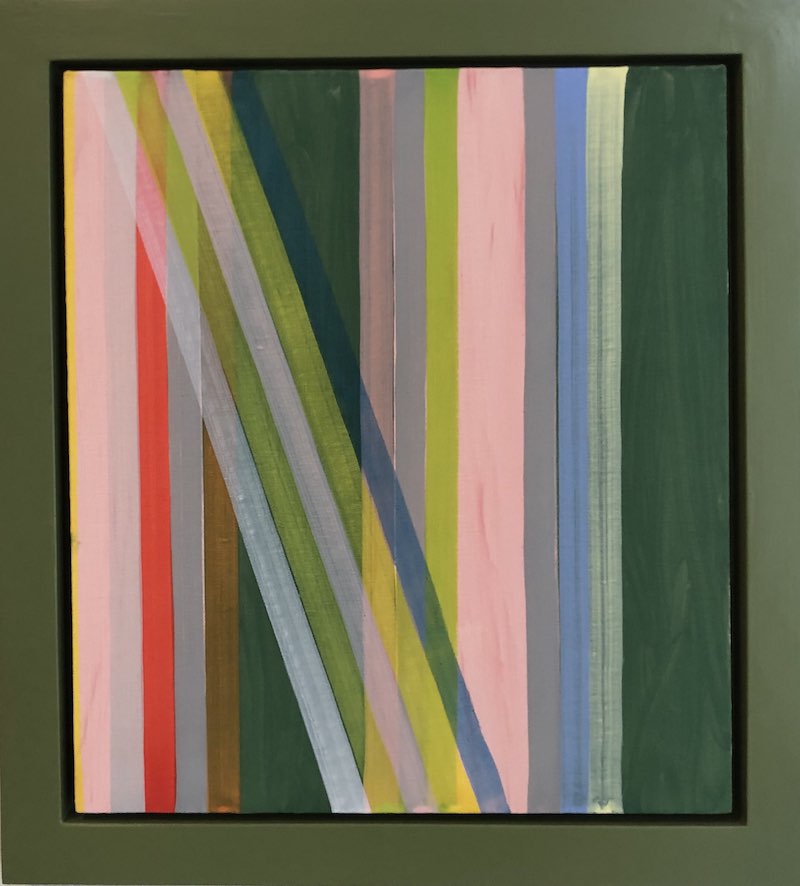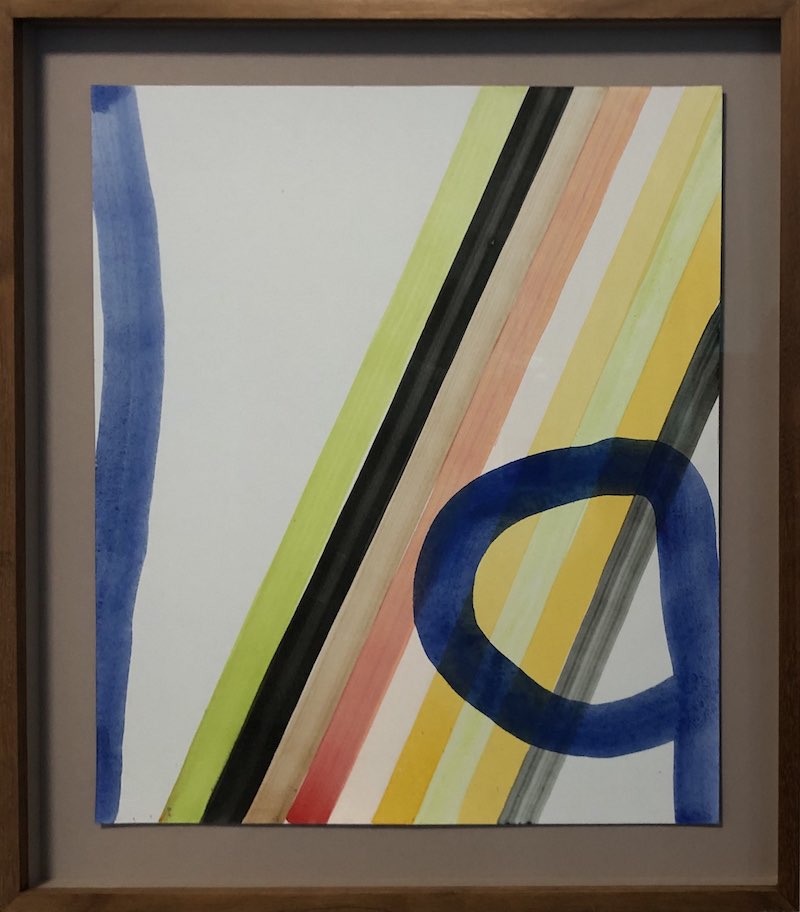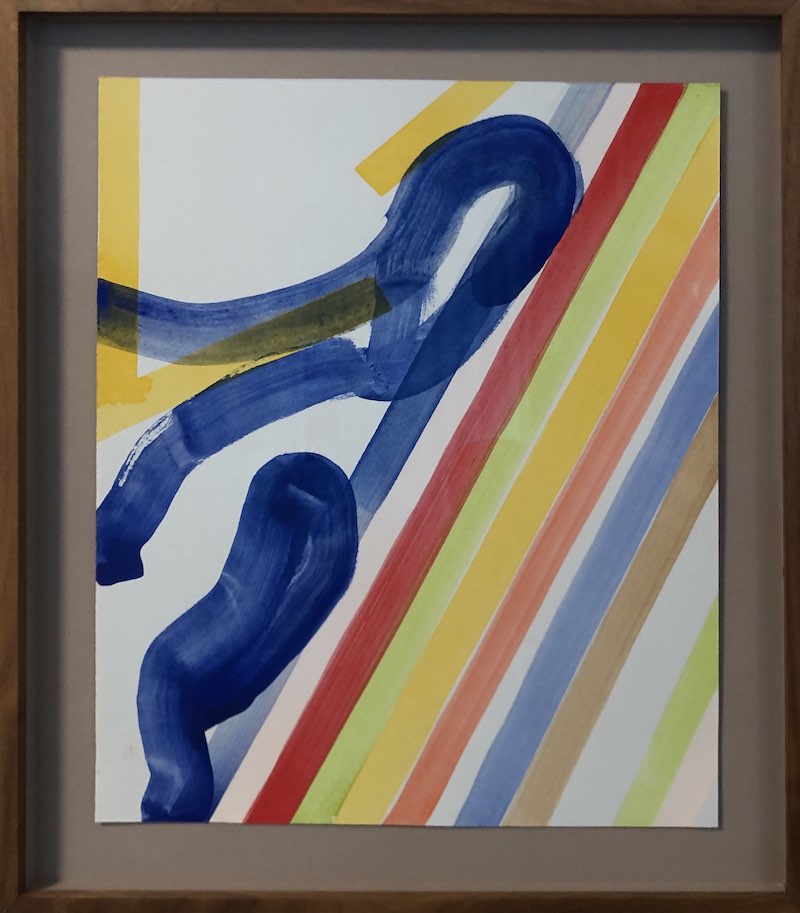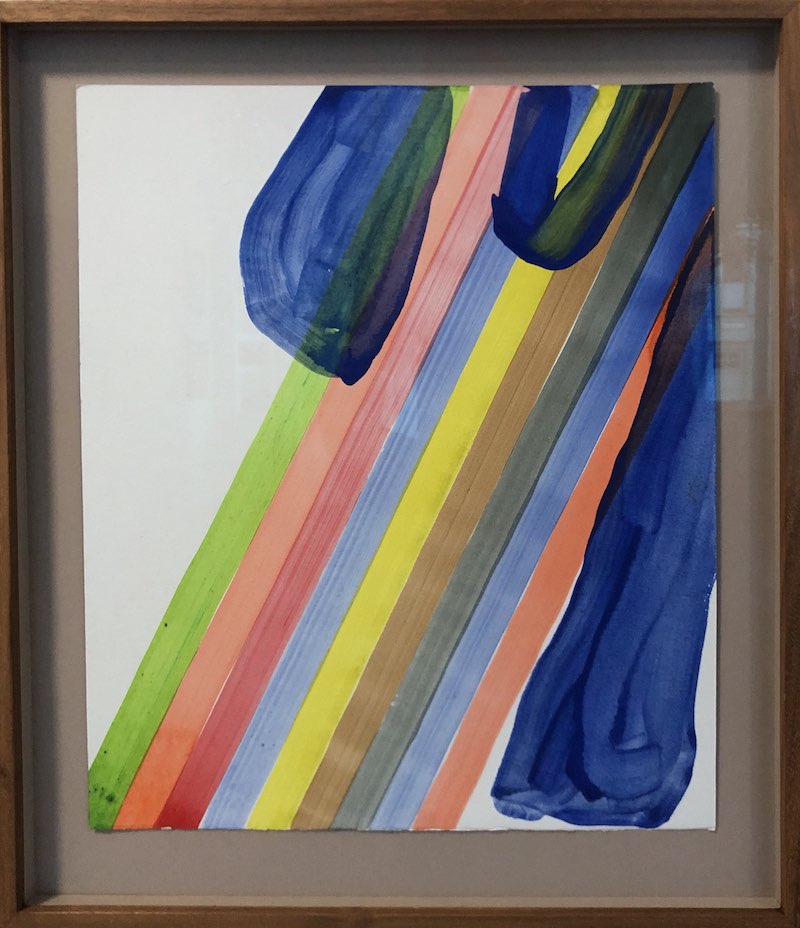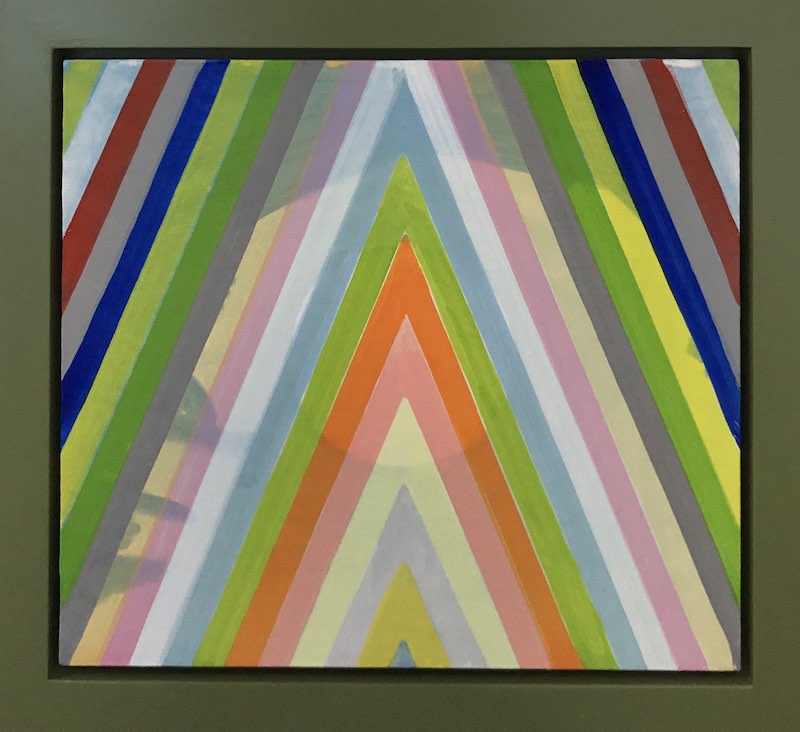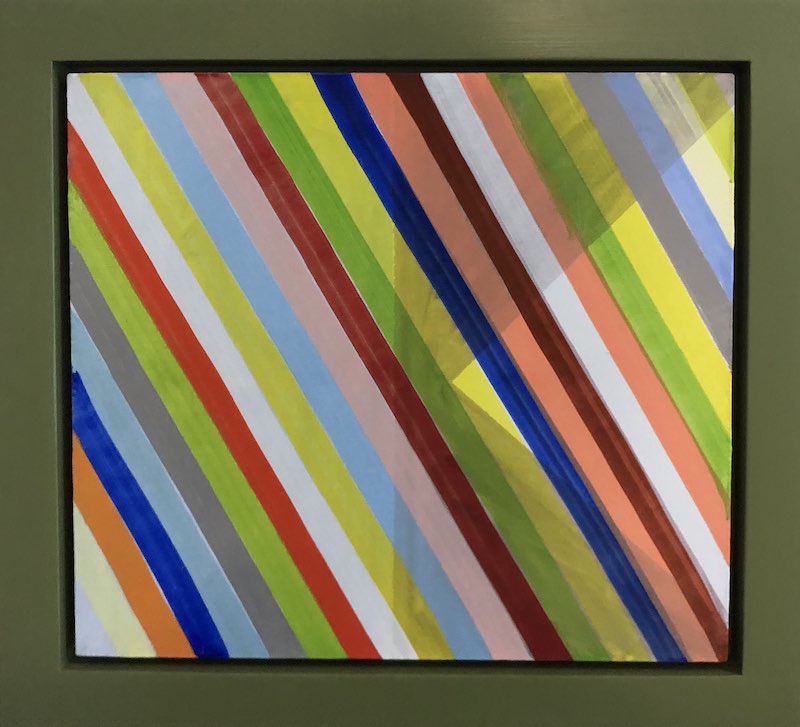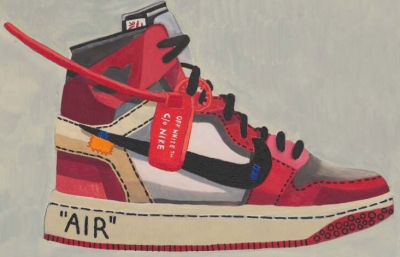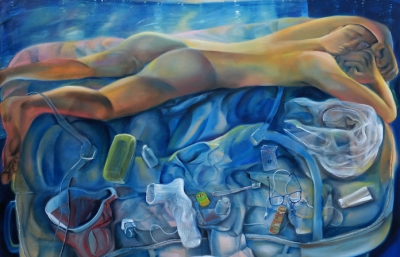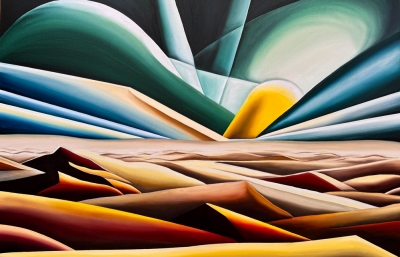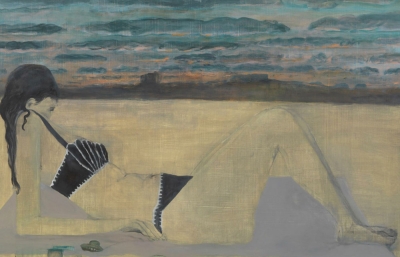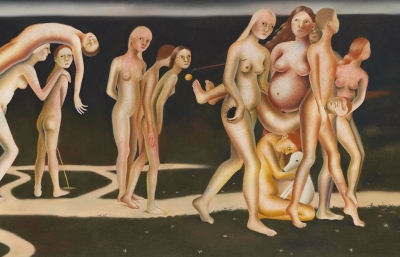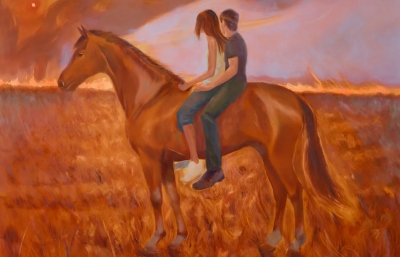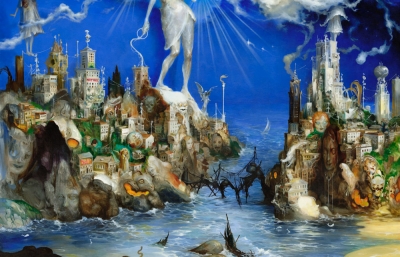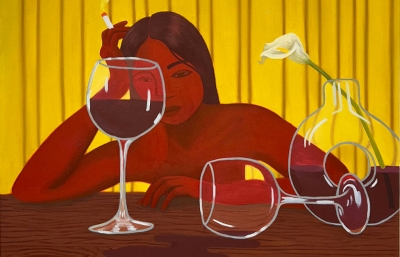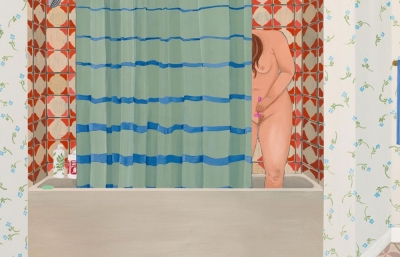Minimalist painter, Peter Kirkeby, exhibits a series of nautical paintings at Upper Market Gallery influenced by sea exploration traditions which include both single-letter flags and horizon paintings; primarily rendered utilizing an array of pastel colors. Kirkeby's art is essentially a silent navigator, guiding viewers through the uncharted waters of curiosity. His deliberate strokes, devoid of excess, create a visceral connection between the observer and the endless expanse of the horizon. Each line, simple, yet meticulously hand-crafted, calls to the primal instinct we all have to continue searching for more. The rendering of closely placed bands of pigment atop a heavily gessoed linen, with their economy of form, captures the essence of sailing into the unknown, inviting us to reflect on our own undiscovered narratives and destinations.
Many of the paintings begin within the tradition of maritime exploration, where for centuries sailors evolved methods to communicate with other seafaring vessels and ports of contact on land. These paintings pertain to the mariner tradition of broadcasting with simple signage; a tradition where a flag can transmit a letter or sentiment. Kirkeby augments these with horizon paintings, which depict the junction where the earth seems to meet the sky. The latter raises aspirational possibilities pertaining to the essence of what or where we are traveling towards. Once a distinct suite of paintings, Kirkeby’s painting practice eventually led him to fuse the nautical alphabet and horizon paintings together, which now comprise the majority of paintings in the exhibition.
Kirkeby is not interested in the literal writing out of a message, which would be too obvious and kitsch, rather, he employs the single command tradition, where the letter of the alphabet stands alone with an instruction for what it also evokes aesthetically. He thereafter works both vertical and horizontal lines over these commands obfuscating the articulation of our own status and well-being. It is primarily a commentary about how we communicate where lines, color, and the abstract elements that specific letters evoke, comprise the visual cues Kirkeby offers us. The flag paintings at Upper Market Gallery include the letters “A,” “B,” “C,” and “W” known as “Alfa, “ “Bravo,” “Charlie,” and “Whiskey.” These letter-signals relate to basic commands and information including: “diver down, keep clear,” “carrying dangerous goods or cargo,” “Affirmative/Yes,” and “I require medical assistance.” Not intended to be verbatim, they nonetheless work subliminally and aesthetically to reveal something about purpose.
The nautical flags are arguably the simplest symbols of language. Even today, the use of these in nautical contexts underscores the profound appeal they have; likely because they are so very rooted in instinctual impulses. Sailors speak with intention, when they let a port know they come in armed and hostile. They also can offer peace and trade; they might communicate they are in distress or convey their motors are not running. In effect, though rudimentary, their communicative potential is expansive.
Likewise, Kirkeby is interested in visually pushing the limits of what can be rendered with paint. The canvas isn't merely a canvas; it's a boundless sea of exploration where the horizons of curiosity stretch infinitely, beckoning us to question and redefine the very essence of the human experience. We face things in life that are uncertain, and we naturally look for meaning derived from the landscape, in this case the horizon we travel toward, alert to the dangers ahead.
It is fundamentally the reduction of a landscape to its essential element of a horizon line; which Kirkeby manipulates, presenting them both vertically and horizontally. They are simple geometric abstractions, but viewed together one always finds the familiar line touching the sky. The notion of sailing to the horizon conjures up notions of the path we are all on; whether we are figuratively sailing toward something, we nonetheless do travel, if we live. We evolve and grow in consciousness and in physical action. Kirkeby asks “Who touches the horizon?” and are we even aware that life is essentially the moments we are in pursuit of something meaningful; whether there is a definitive arrival or not.
Kirkeby’s horizons aren’t always straight on: the seas of life are not always calm and like a spinning compass, so too do our orientations tilt and shift beyond our control. It is this loss of balance that gives life to wild ideas; modern day explorers embody this disordered mindset when reaching new horizons with space travel. The angle of the lines depicted by Kirkeby equally express the sights of astronauts orbiting the earth and navigating the abyss that is space. Metaphorically, they represent the parts of our mind that lean further into uncertainty in an attempt to pioneer discovery.
Despite rejecting any demand for strict perfection, precision is nevertheless paramount in Kirkeby's artistic process. Utilizing 1-inch brushes, he carefully selects each hue, mindful of the subtle colors that makeup his palette. His deliberate separation of brushes, a practice to preserve the purity of pigments, mirrors the meticulousness of ancient cartographers mapping unexplored territories. There are no shortcuts in his craft; he navigates each stroke with a steady hand, eschewing the use of tape, thus embracing human imprecision. He is comfortable revealing his limitations, yet within these careful movements, there lies a profound connection to the theme of curiosity. Each line drawn is a deliberate step into the unknown, an example of the audacious spirit that guided sailors on their historic voyages.
Kirkeby's works, composed primarily of oil paints and tinted gesso (a practice he picked up from Sam Francis), manifest as bold lines, each stroke embodying the essential elements of form. His relatively small canvases, predominantly measuring 15 x 17 inches or 17 x 19 inches, conceal the vastness they ultimately project. Just as sailors like Magellan and Columbus ventured into sea voyage with limited knowledge, Kirkeby is encouraging us to embrace the possibility of what lay beyond the horizon. It's a metaphorical homage to the spirit of exploration and the risk-taking encapsulating the essence of wonder — the relentless and somewhat insane pursuit of understanding what exists beyond the known.
Kirkeby's art doesn't merely reflect history; it intertwines with it, mirroring the unhinged possibilities that fueled human exploration for centuries. Describing himself as “always becoming an artist” Kirkeby’s dedication is exhaustive by choice, a true deep-dive into the mechanics of painting and the path of self-discovery. —Kelly Jean Egan & Matt Gonzalez

